About us
About the Sorby Laboratory Suite
The NERC-recognised Sorby Lab Suite (SLS) forms a set of laboratory spaces and equipment in the School of Earth and Environment, which support fluid dynamics and particulate character research and teaching across a diverse range of environmental, engineering and biological research areas. The SLS is a key component of the EPSRC funded Centre for Doctoral Training in Fluid Dynamics and is an important facility for the Leeds Institute for Fluid Dynamics (LIFD).
The SLS facilities enable the interdisciplinary community to experiment upon a range of simulated natural processes, from flow-sediment transport links in alluvial channels, through the dispersal of sediments and pollutants in the deep oceans, to particulate transport through pipes and rig vessels.
The SLS has existing world-leading capabilities in three facilities:
i) the quantification of complex geophysical flows using Particle Imaging Velocity (PIV) techniques in the Fluid Dynamics Laboratory (FDL),
ii) the design and measurement of sediment-laden gravity current experiments in the Density Currents Laboratory (DCL), and
iii) the high resolution analysis of particle character (shape and size) in the Sediment, Soil and Pollutant Analysis Laboratory (SSPAL).
We are responsible for creating our laboratory culture, and as such have created a Code of Conduct which we expect all of our laboratory users to abide by.
Previous Work
If you would like to see some of the work that has previously been undertaken in the Sorby Labs Suite then click on the drop down menus below. Further information about our capabilities, facilities and instrumentation can be found on the respective Sorby Lab Suite page.
Fluid Dynamics Laboratory
Here is an overview of the different projects which have recently been undertaken in the Fluid Dynamics Laboratory. If you require state of the art high special and temporal 3D visualisation of your flow you need to see our capabilities, facilities and instrumentation on the Fluid Dynamics Laboratory page
Something different: investigating respirator fit to inform face mask protocols – a new Sorby Lab Suite Fluid Dynamics Laboratory, School of Earth & Environment and School of Engineering collaboration at the University of Leeds. A medium wave infrared camera (MWIR) was used to capture images of a human subject wearing various face masks. By using a special filter the MWIR camera becomes highly sensitive to optical adsorption of CO2 and allows visualization of CO2 at room temperature.
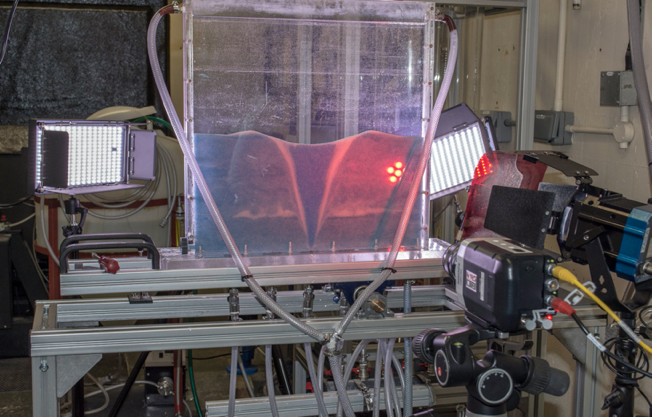

Georgina Williams undertook her PhD lab project in the Fluid Dynamics Laboratory looking at Segregation in High Concentration Particulate Flows. Her lab work was funded by the EPSRC CDT Fluid Dynamics at University of Leeds. This video compares grain size mixes and flow speeds.
Caroline Marshall completed the experimental work for her PhD in the Fluid Dynamics Laboratory which utilised the Tomo PIV to investigate turbulence in density currents. Her lab work was funded by the EPSRC CDT Fluid Dynamics at University of Leeds.
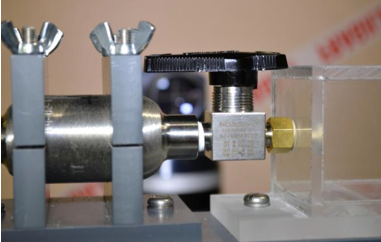
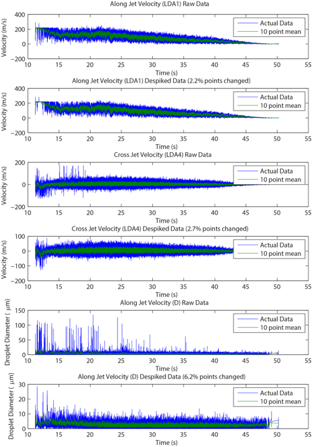
The Sorby Lab Suite has also completed consultancy projects for external partners.
The Fluid Dynamics Laboratory completed the COOLTRANS project which was funded by the National Grid and utilised the LDA to visualise the output from high pressure CO2 exhaust.


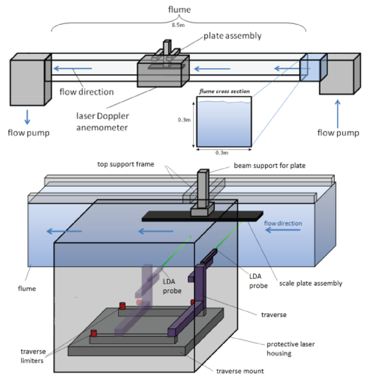
Charlie Lloyd completed the experimental work for his PhD in the Fluid Dynamics Laboratory. His project utilised the LDA to measure the turbulence created by different types of shark scales. His lab work was funded by the EPSRC CDT Fluid Dynamics at University of Leeds in collaboration with Speedo.
Density Current Laboratory
Here is an overview of the different projects which have recently been undertaken in the Density Current Laboratory.
If you require measurement of your Density Current problems you need to see our capabilities, facilities and instrumentation on the Density Current Laboratory page
Lauren Swan completed her MGeol dissertation project in the Density Current Laboratory which investigated the Internal dynamics of lofting hyperpycnal flows and their impact on subsequent deposits.
Luan Ho completed the experimental work for his PhD in the Density Current Laboratory which investigated multi-pulsed turbidity: current dynamics and geological implications. His lab work was funded by the Turbidites Research Group at University of Leeds.

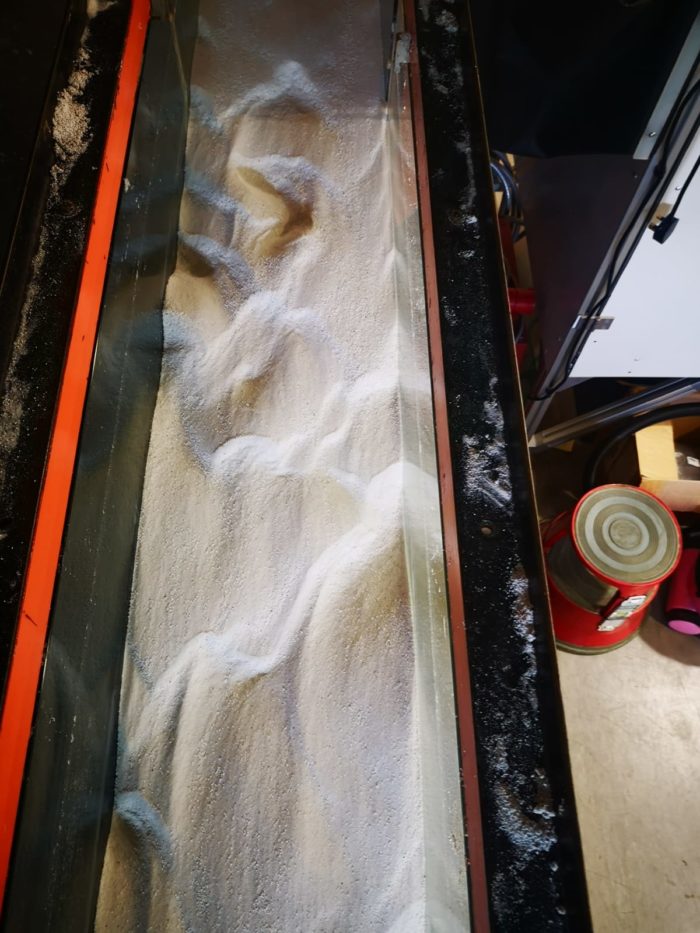
Isabel de Cala completed the experimental work for her PhD in the Density Current Laboratory, and the grain size analysis of the cores from her experiment in SSPAL. She investigated the effects of grain size distribution on bedform development. Her lab work was funded by the Turbidites Research Group at University of Leeds.
Sediment, Soil and Pollutant Analysis Laboratory (SSPAL)
Here is an overview of the different projects which have recently been undertaken in SSPAL.
If you require accurate size and shape data for your particles between 0.1nm and 3mm then you need to see our capabilities, facilities and instrumentation on the SSPAL page


Isabel de Cala completed the experimental work for her PhD in the Density Current Laboratory, and the grain size analysis of the cores from her experiment in SSPAL. She investigated the effects of grain size distribution on bedform development. Her lab work was funded by the Turbidites Research Group at University of Leeds.
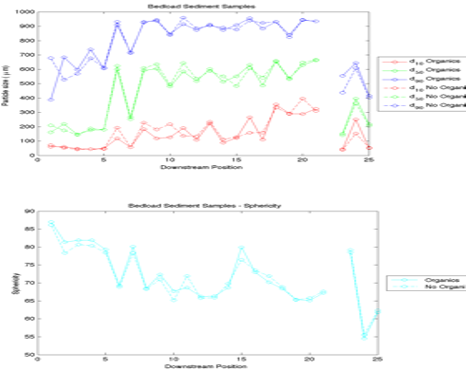
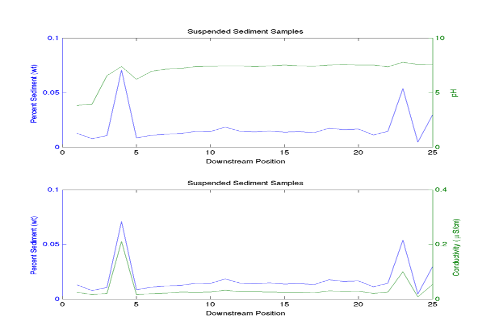

The Sorby Lab Suite has also completed consultancy projects for external partners.
We undertook sampling and analysis of Crimple Beck in SSPAL for Nidderdale Area of Outstanding Natural Beauty to report on the distribution of suspended and bedload sediment across the catchment. This was used to inform erosion risk and sediment fingerprinting in the catchment.
Royal Institution Christmas Lecture Technicians' Placement 2020
Helena Brown won a placement as part of the Royal Institution Christmas Lecture Demo Team, below is a report covering her experience.
When the Royal Institute announced the topic for this year’s Christmas Lectures was Earth Science, I was immediately excited. I knew that they collaborated with ‘Technicians Make It Happen’ to allow two technicians to join the Christmas Lecture demo-building team and knew I had the ideal set of skills to help from my time working in the Sorby Environmental Fluid Dynamics Laboratory in the School of Earth and Environment.
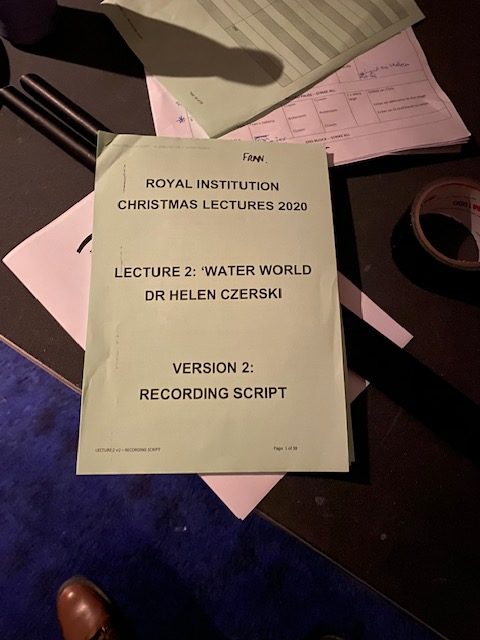
Photo of the script backstage at the recording of Lecture 2.
When I applied for the position I didn’t really think much would come of it. I had an interview over Zoom with Fran Scott and David Porter, who were so lovely it seemed like more of a chat. A few days later I was offered the position.
I arrived in London on Friday 13th November, and due to lockdown 2 everything was eerily quiet. You could say it was ultimate 2020 experience to have the opportunity to spend two weeks in London but not be able to enjoy any of the museums, galleries, food or drink, or see any of my colleagues outside of work.
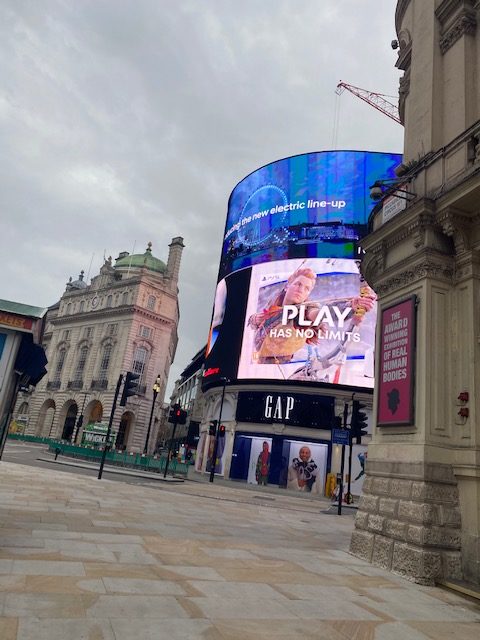
Photo of deserted streets, Pall Mall and Piccadilly Circus
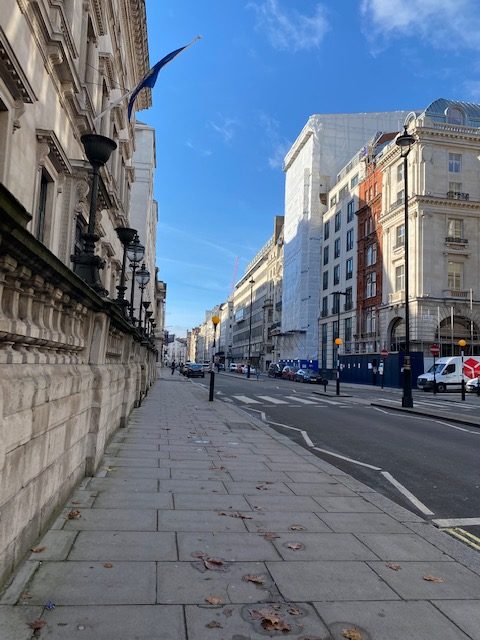
Photo of deserted streets, Pall Mall and Piccadilly Circus
On my first day I was given a tour of the Royal Institute building by the front-of-house team, then met the rest of the demo team who I would be working with for the duration of my placement. The team consisted of RI staff who worked on the Christmas Lectures each year, some who had been borrowed due to their skills and two further technicians. Everyone was so welcoming, kind and interesting - I felt immediately like I was part of the team.
My ‘induction’ was a bizarre but simple task: make a plastic bucket look like an old leather bucket using papier mache and paint. This set the bar for the rest of my placement, being asked to make demos and props to explain a complex scientific principle in a really visual and fun way.
Each day we would be given tasks to complete, usually to create a proof-of-concept for a demo, and then later in the day we would test the demo, filming it to show the lecturers and production team as the building was mostly empty due to COVID restrictions.
The demo would then be adjusted to ensure it worked well and looked good on camera.
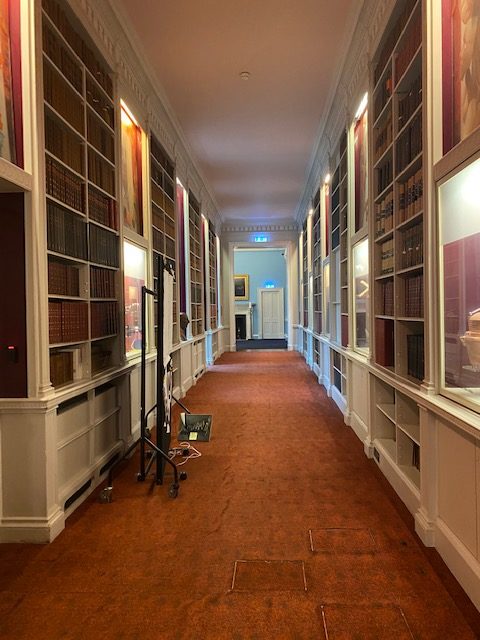
Corridor in the RI
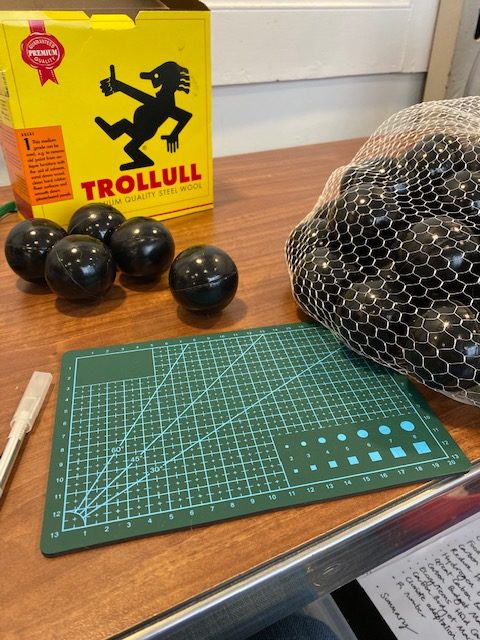
Adapting play pit balls for a demo
The demo team had a great mix of skills and we helped each other overcome problems and utilise the materials they already had. Some of us were good at making things work, and others made them look good enough to be on camera. For me the joy of making demos is that they don’t have to be robust and perfect, as long as they visualise the concept then they’re done - and you can move onto the next task. After months of working from home it was so enjoyable to be able to be productive and creative again.
There were a lot of long days, but the fact that we were having so much fun, and there was such a great atmosphere, made it one of the highlights of my career (I would say a highlight of 2020, but we know that isn’t saying very much!).
The final three days were for the rehearsals and filming of lecture 2, for which I would be a runner. When I applied, I didn’t really know what I was letting myself in for – it turns out that a runner sets up the demos for filming (no problem) but then has to wheel them on and off the set (oh jeez). I was given a timetable of when the demos needed to be on by the excellent demo stage manager Jemma and worked with Fran and Jemma to seamlessly prep and bring out the demos as they were needed.
The filming required a lot of standing around while camera angles and lighting levels were discussed, and it was difficult to remain alert enough to pick up changes to the demo timing and placements while prepping the next demo or tidying up the previous one. Luckily the team I was working with were brilliant, and I just followed their lead.
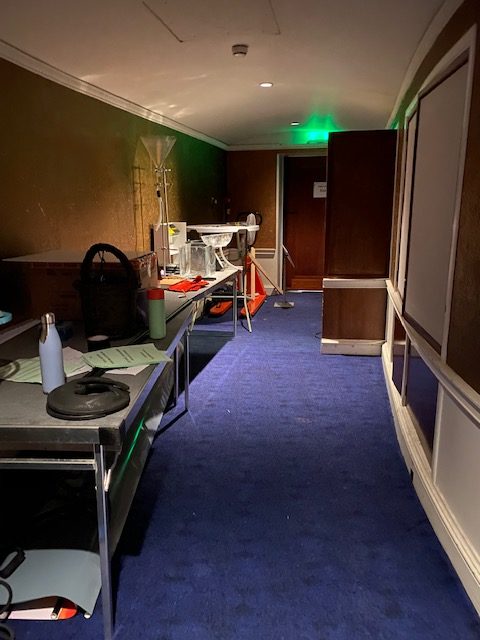
Backstage for Helen’s lecture, all the demos waiting to be set up
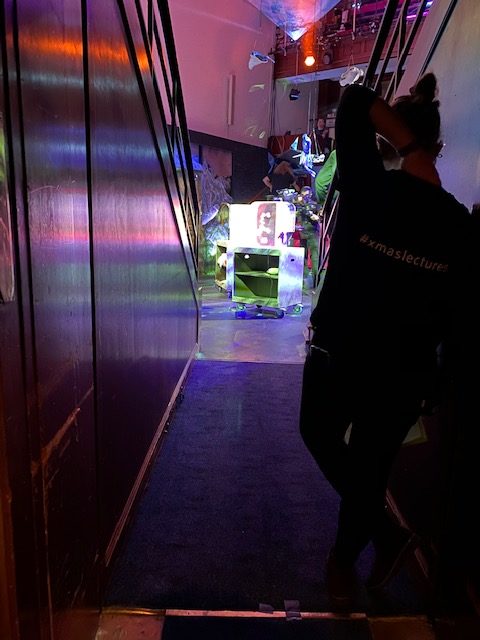
Jemma waiting for the next demo cue
All in all, the placement was fantastic, and I would recommend it to anyone. The entire demo team was really grateful for the expertise each of us technicians brought, and they managed to make the process fun despite social distancing, constant mask wearing and very long hours.
To everyone who works at the RI, thank you for inviting me and making it such a great experience, if you ever need my help again you know where I am…..
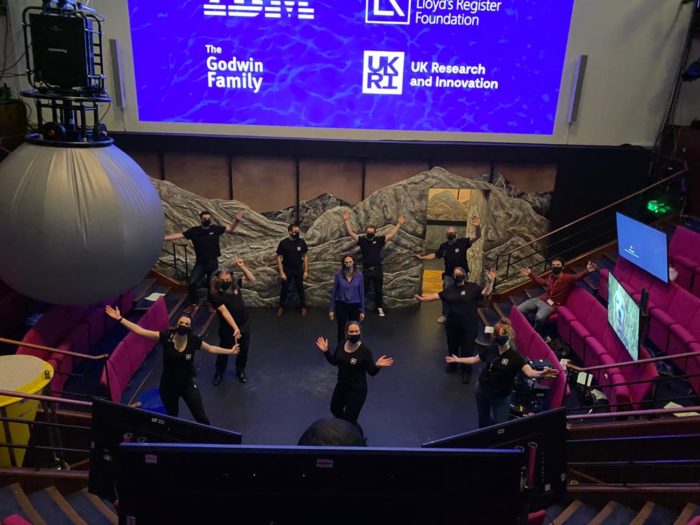
The demo team with Helen Czerski after the filming for her lecture had finished
Current PGRs and Post Docs
Previous PGRs and Postdocs
Georgina Williams completed the experimental work for her PhD in the Fluid Dynamics Laboratory
Isabel de Cala completed the experimental work for her PhD in the Density Currents Laboratory and SSPAL.
Charlie Lloyd completed the experimental work for his PhD in the Fluid Dynamics Laboratory
Rory Hetherington completed the experimental work for his PhD in the Fluid Dynamics Laboratory
Luan Ho completed the experimental work for his PhD in the Density Current Laboratory and is now undertaking an EPSRC funded post doc at University of Sheffield looking at turbulent mixing in pipes.
Hugh Rice completed the experimental work for his PhD in the Fluid Dynamics Laboratory and has undertaken numerous post doc roles at University of Leeds in the Faculty of Engineering since graduation.
Who are we?
Prof Dave Hodgson
Prof Dave Hodgson is the SLS Lab Director, along with being Deputy Directory of NERC funded Yorkshire iCASP, Deputy Director of Research (Impact) for SEE, Professor of Stratigraphy and Sedimentology, Editor in chief of Frontiers in Earth Science: Sedimentology, Stratigraphy, Diagenesis and PI for Lobe 3 and Shallow Marine Research Groups.
More information, and contact details, can be found on Dave's staff page.
Dr Gareth Keevil
Dr Gareth Keevil is the SLS Experimental Officer, along with being the Laser Safety Officer for School of Earth & Environment and teaching part of the CDT Fluid Dynamics 'Foundations of Fluids' module.
More information, and contact details, can be found on Gareth's staff page
Helena Brown
Helena Brown is the Lead technician for SSPAL and the Sorby Lab Suite, and is the joint Equality and Inclusion Coordinator for the School of Earth & Environment.
Contact details can be found on Helena's staff page.
Partnerships
The Sorby Laboratory Suite has been a NERC-recognised facility since 2007.
Our 3D LDA/ 2D PDA and 2C PIV laser equipment is supplied by Dantec dynamics. The Sorby Laboratory Suite is a Dantec centre of excellence.
Sorby Laboratory Suite staff work closely with Sellafield Ltd. and staff from the School of Chemical and Process Engineering to research the flows of particulate suspensions through pipe systems.
The Sorby Laboratory Suite is in partnership with Leeds Institute for Fluid Dynamics.
The Sorby Laboratory Suite is in partnership with the EPSRC funded CDT Fluid Dynamics. The labs host the teaching for the Foundation of Fluids lab work module and numerous PhD projects.
Publications
Marshall CR, Dorrell RM, Keevil GM, Peakall J, Tobias SM. 2021. Observations of large-scale coherent structures in gravity currents: implications for flow dynamics. Experiments in Fluids. 62(6)
Rice, H.P., Peakall, J., Fairweather, M., and Hunter, T.N., Extending Estimation of the Critical Deposition Velocity in Solid-Liquid Pipe Flow to Ideal and Non-Ideal Particles at Low and Intermediate Solid Volume Fractions, Chemical Engineering Science, Vol. 211, No. 1, 115308, 2020.
Rice, H.P., Fairweather, M., Hunter, T.N., Mahmoud, B.H., Biggs, S.R., and Peakall, J., Measurement of Particle Concentration in Settling Multiphase Pipe Flow Using Acoustic Methods, Proceedings of the 10thInternational ERCOFTAC Symposium on Engineering Turbulence Modelling and Measurements – ETMM10, Marbella, Spain, 17th-19th September 2014.
Rice, H.P., Fairweather, M., Peakall, J., Hunter, T.N., Mahmoud, B.H., and Biggs, S.R., Constraining the Functional Form of the Critical Flow Velocity at Low Concentrations in Multiphase Pipe Flow, Turbulence, Heat and Mass Transfer 8, Proceedings of the Eighth International Symposium on Turbulence, Heat and Mass Transfer, Sarajevo, Bosnia and Herzegovina, 15th-18th September 2015, Hanjalic, K., Miyauchi, T., Borello, D., Hadziabdic, M., and Venturini, P. (Eds.), Begell House Inc., New York, pp. 579-582, 2015.
Hugh P. Rice, Jamie L. Pilgrim, Michael Fairweather, Jeff Peakall, David Harbottle, Timothy N. Hunter (2020) Extending acoustic in-line pipe rheometry and friction factor modeling to low-Reynolds-number, non-Newtonian slurries. AIChE J. 2020;e16268.
Faust Johan C., Stevenson Mark A., Abbott Geoffrey D., Knies Jochen, Tessin Allyson, Mannion Isobel, Ford Ailbe, Hilton Robert, Peakall Jeffrey and März Christian. (2020) Does Arctic warming reduce preservation of organic matter in Barents Sea sediments?Phil. Trans. R. Soc. A.37820190364
Stevenson Mark A., Faust Johan C., Andrade Luiza L., Freitas Felipe S., Gray Neil D., Tait Karen, Hendry Katharine R., Hilton Robert G., Henley Sian F., Tessin Allyson, Leary Peter, Papadaki Sonia, Ford Ailbe, März Christian and Abbott Geoffrey D. 2020Transformation of organic matter in a Barents Sea sediment profile: coupled geochemical and microbiological processes. Phil. Trans. R. Soc. A.37820200223
Ben J. Fisher, Oliver W. Moore, Johan C. Faust, Caroline L. Peacock, Christian März (2020) Experimental evaluation of the extractability of iron bound organic carbon in sediments as a function of carboxyl content. Chemical Geology, Volume 556, 5 December 2020, 119853
Davarpanah Jazi, S., Wells, M.G., Peakall, J., Dorrell, R.M., Thomas, R.E., Keevil, G.M., Darby, S.E., Sommeria, J., Viboud, S., Valran, T., 2020. Influence of Coriolis force upon bottom boundary layers in a large-scale gravity current experiment: Implications for evolution of sinuous deep-water channel systems. Journal of Geophysical Research – Oceans, 125, e2019JC015284, doi: 10.1029/
Bux, J, Peakall, J, Rice, HP et al. (2019) Measurement and density normalisation of acoustic attenuation and backscattering constants of arbitrary suspensions within the Rayleigh scattering regime. Applied Acoustics, 146. pp. 9-22.
Ho, V. L., Dorrell, R. M., Keevil, G. M., Thomas, R. E., Burns, A. D., Baas, J. H., & McCaffrey, W. D. (2019). Dynamics and Deposition of Sediment-Bearing Multi- Pulsed Flows and Geological Implication. Journal of Sedimentary Research, 8(11), 1127-1139.
Kelly, R. W., Dorrell, R. M., Burns, A. D., & McCaffrey, W. D. (2019). The structure and entrainment characteristics of partially-confined gravity currents. Journal of geophysical research. C, Oceans, 124(3), 2110-2125.
Ho, VL, Dorrell, RM, Keevil, GM et al. (2018) Pulse propagation in turbidity currents. Sedimentology, 65 (2). pp. 620-637
Ho, V. L., Dorrell, R. M., Keevil, G. M.,Burns, A. D., & McCaffrey, W. D. (2018). Scaling analysis of multipulsed turbidity current evolution with application to turbidite interpretation.Journal of Geophysical Research:Oceans, 123
Dorrell RM, Amy LA, Peakall J, McCaffrey WD. 2018. Particle Size Distribution Controls the Threshold Between Net Sediment Erosion and Deposition in Suspended Load Dominated Flows. Geophysical Research Letters. 45(3), pp. 1443-1452
Creelle, S., Thomas, R. E., Schindfessel, L., McLelland, S. J., Creëlle, S., & De Mulder, T. (2017). Bias in mean velocities and noise in variances and covariances measured using a multistatic acoustic profiler: the Nortek Vectrino Profiler. Measurement Science and Technology, 28(7), 075302.
Baas, J.H., Best, J.L., Peakall, J., 2016a. Predicting bedforms and primary current stratification in cohesive mixtures of mud and sand. Journal of the Geological Society, 173, 12-45. doi: 10.1144/jgs2015-024.
Peakall, Jeff ; Sumner, Esther J (2015) Submarine channel flow processes and deposits: A process-product perspective Geomorphology, 01 September 2015, Vol.244, pp.95-120
Peakall, Jeff ; Sumner, Esther J (2015) Submarine channel flow processes and deposits: A process-product perspective Geomorphology, 01 September 2015, Vol.244, pp.95-120
Fletcher, T., Altringham, J., Peakall, J., Wignall, P., Dorrell, R., 2014. Hydrodynamics of fossil fishes. Proceedings of the Royal Society B 281
Chalk C, Pastor M, Peakall J, Borman D, Sleigh PA, Murphy W, Fuentes R. (2020) Stress-Particle Smoothed Particle Hydrodynamics: an application to the failure and post-failure behaviour of slopes. Computer Methods in Applied Mechanics and Engineering.
J. Lloyd, J. Peakall, A. D. Burns, G. M. Keevil & R. M. Dorrell (2020) Numerical errors at walls: on the sensitivity of RANS models to near-wall cell size, International Journal of Computational Fluid Dynamics
Cosgrove GIE, Hodgson DM, Mountney NP, McCaffrey WD. 2019. High-resolution correlations of strata within a sand-rich clinothem using grain fabric data, offshore New Jersey, USA. Geosphere. 15(4), pp. 1291-1322
James D. Atkinson, Benjamin J. Murray, Matthew T.Woodhouse, Thomas F. Whale, Kelly J. Baustian, Kenneth S. Carslaw, Steven Dobbie, Daniel O’Sullivan & Tamsin L. Malkin (2013) The importance of feldspar for ice nucleation by mineral dust inmixed-phase clouds, Nature, 498, pp355-358
Cosgrove, GIE, Hodgson, DM., Poyatos-Moré, M et al. (2018) Filter Or Conveyor? Establishing Relationships Between Clinoform Rollover Trajectory, Sedimentary Process Regime, and Grain Character Within Intrashelf Clinothems, Offshore New Jersey, U.S.A. Journal of Sedimentary Research, 88 (8). pp.917-941
Andrea Vidal-Durà, Ian T. Burkea, Douglas I. Stewartb, Robert J.G. Mortimerc., 2018, Reoxidation of estuarine sediments during simulated resuspension events: Effects on nutrient and trace metal mobilisation Estuarine, Coastal and Shelf Science 207 40–55
Mariona Chicón Bosch, Elizabeth A. Roundhill, Alastair P. Droop, Michael Parry, Lee Jeys, Susan A. Burchill. RNAseq of patient-derived cancer stem-like cells and exosomes provides new insights into Ewing's sarcoma [abstract]. In: Proceedings of the American Association for Cancer Research Annual Meeting 2018; 2018 Apr 14-18; Chicago, IL. Philadelphia (PA): AACR; Cancer Res 2018;78(13 Suppl):Abstract nr 3696.
Ho, Viet ; Dorrell, Robert ; Keevil, Gareth ; Thomas, Robert ; Burns, Alan ; Baas, Jaco ; Mccaffrey, William (2019) Dynamics and deposition of sediment-bearing multi-pulsed flows and geological implication Journal of Sedimentary Research, Nov 2019, Vol.89(11), p.1127
Laura N.Elliott, Richard A.Bourne, Ali Hassanpour, John L.Edwards, Stephen Sutcliffe, Timothy N.Hunter (2018) Salt enhanced solvent relaxation and particle surface area determination via rapid spin-lattice NMR Powder Technology, Volume 333, 15 June 2018, Pages 458-467
O’Sullivan, B. J. Murray, T. L. Malkin, T. F. Whale, N. S. Umo, J. D. Atkinson, H. C. Price, K. J. Baustian, J. Browse, and M. E. Webb (2014) Ice nucleation by fertile soil dusts: relative importance of mineral and biogenic components Atmos. Chem. Phys., 14, 1853–1867, 2014
